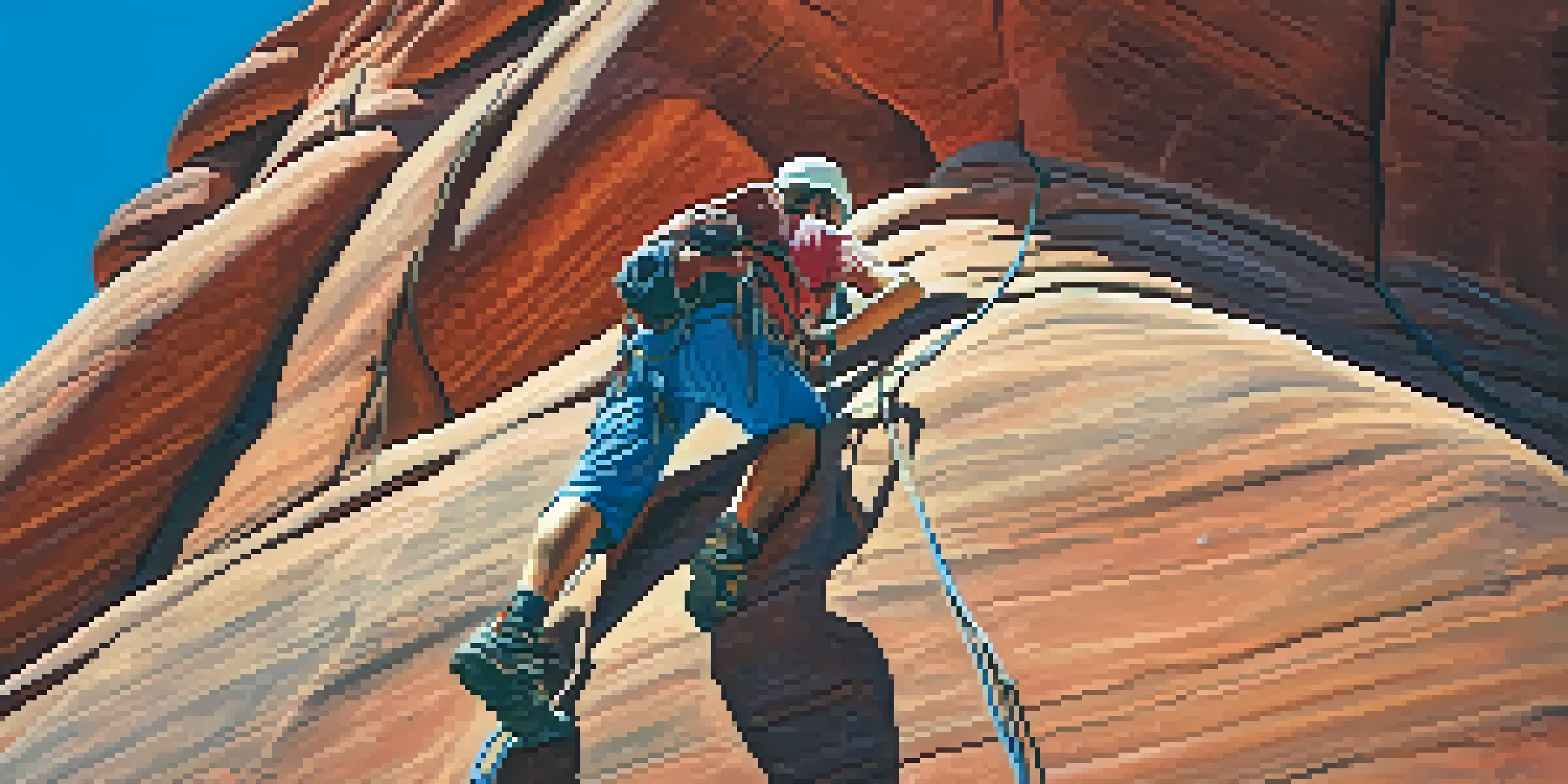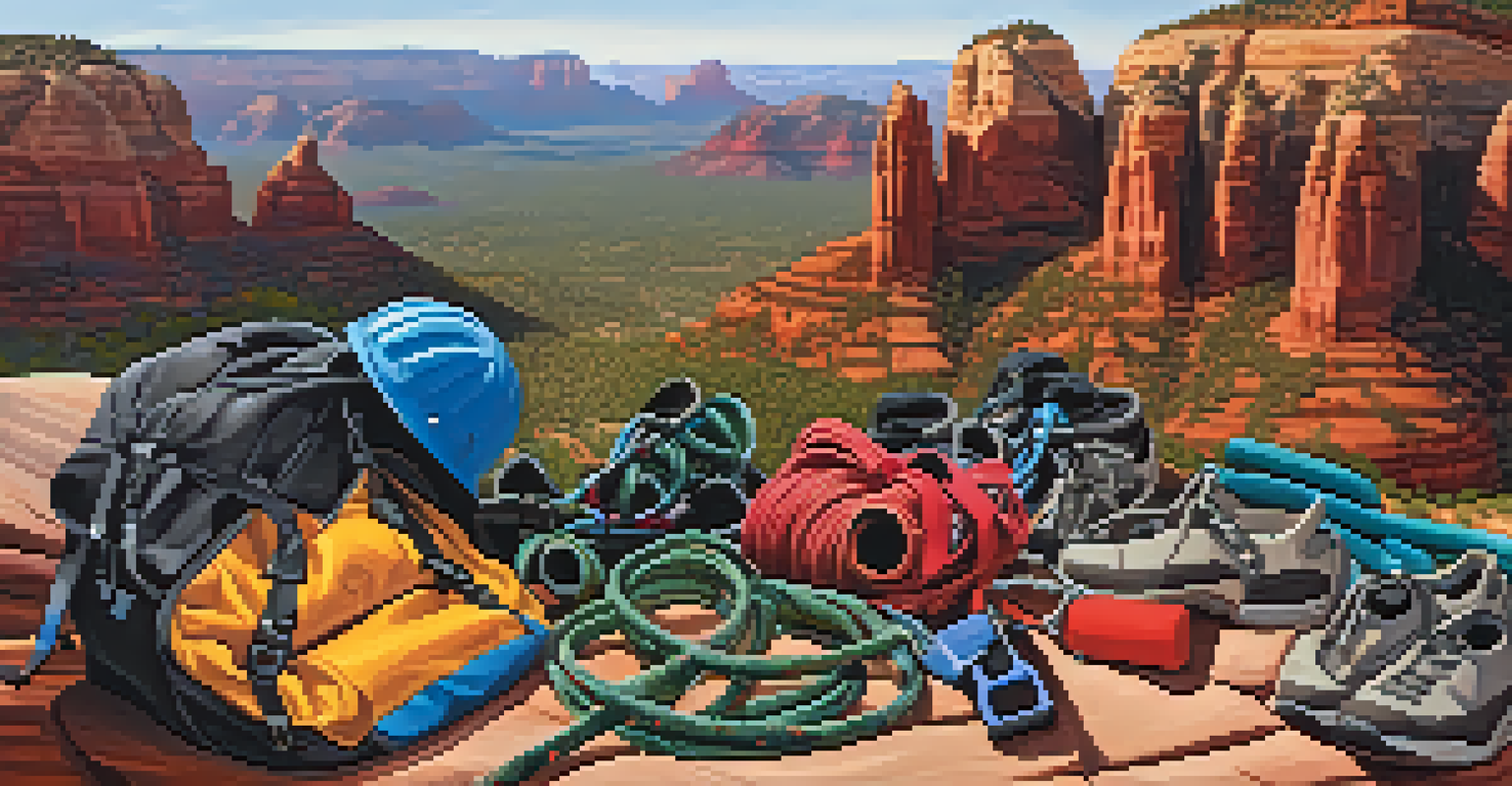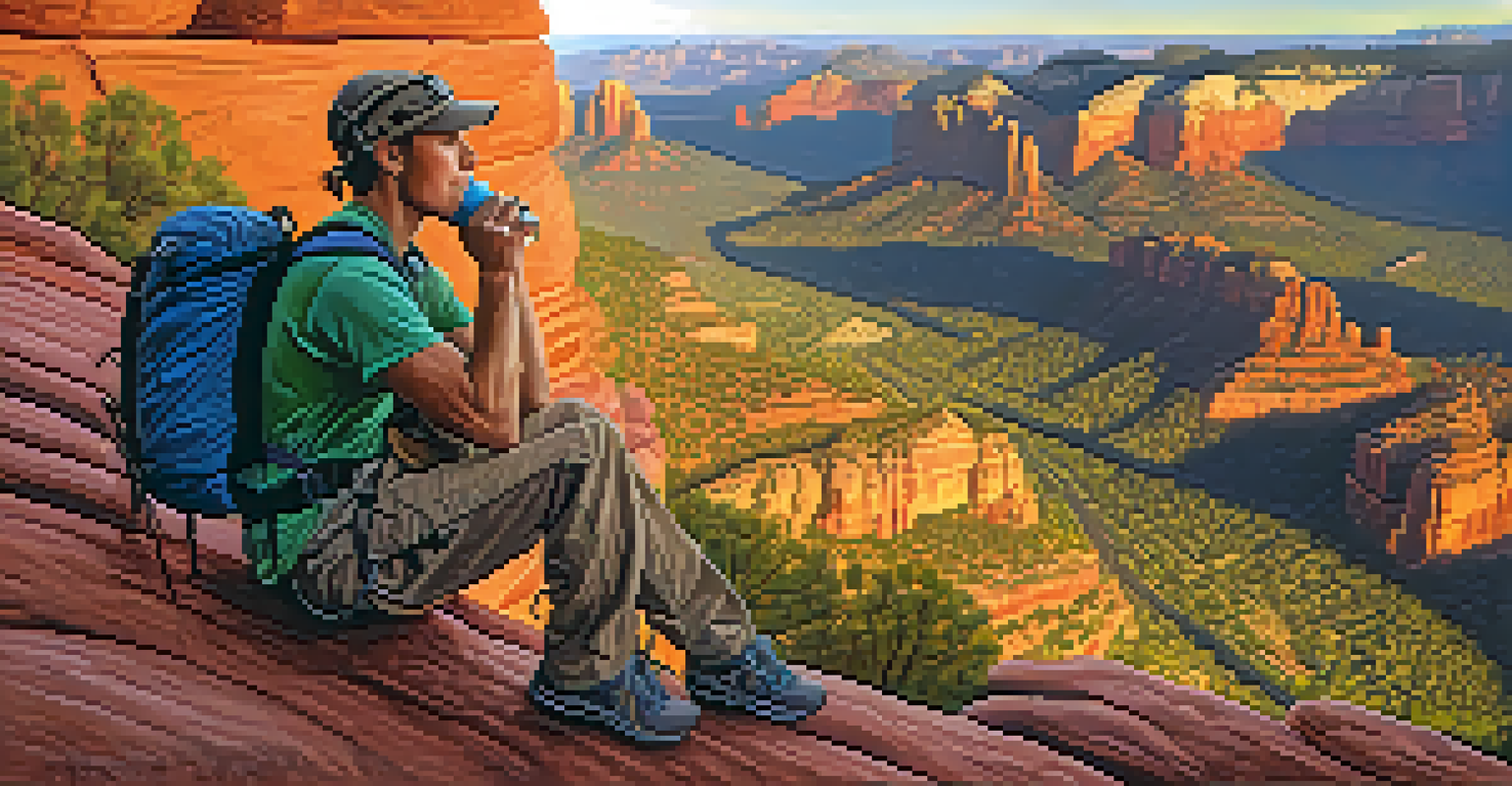Essential Gear for Rock Climbing in Sedona, Arizona

Choosing the Right Climbing Shoes for Sedona's Terrain
When venturing into the stunning red rocks of Sedona, having the right climbing shoes is crucial. Opt for shoes that provide a snug fit with good rubber for traction on both smooth and textured surfaces. The unique sandstone found in Sedona requires footwear that can handle various types of holds without slipping.
The best climber in the world is the one who has the most fun.
It's also wise to consider the type of climbing you'll be doing—sport, trad, or bouldering—as this can influence your shoe choice. For example, sport climbers might prefer a more aggressive shoe for precision, while trad climbers may opt for a more comfortable, all-day wear model.
Lastly, don't forget to break in your shoes before hitting the crags. A well-fitted, broken-in shoe will enhance your performance and comfort, allowing you to enjoy the breathtaking views Sedona has to offer while you climb.
Harnessing Safety: The Importance of a Good Climbing Harness
A quality climbing harness is essential for safety and comfort during your Sedona adventures. Look for a harness that fits snugly and is adjustable to accommodate layers of clothing, especially in varying weather conditions. Padding is also important for comfort during long climbs.

Many harnesses come with multiple gear loops, which are handy for carrying essential equipment like quickdraws and climbing gear. This feature becomes particularly useful in Sedona, where climbers often encounter varied routes that require different gear setups.
Choosing the Right Climbing Shoes
Select climbing shoes with a snug fit and good rubber for optimal traction on Sedona's unique sandstone terrain.
Don’t overlook the importance of checking your harness before each climb. A quick inspection can ensure that all buckles are secure and that the harness is free of wear and tear, keeping you safe as you navigate the stunning cliffs of Sedona.
Essential Climbing Gear: Ropes and Protection
Ropes and protection gear are the backbone of a safe climbing experience. In Sedona, a dynamic rope is ideal for sport climbing, providing the stretch needed during falls. Typically, a 60-70 meter rope is sufficient for most routes in the area.
Climbing is as much about the journey as it is about the destination.
Along with ropes, having the right protection, such as quickdraws and carabiners, is vital. Quickdraws allow you to connect your rope to anchors securely, while carabiners come in handy for various tasks, including belaying and anchoring.
Be sure to familiarize yourself with the routes you'll be climbing to determine the amount and type of protection you'll need. This preparation can make your climbing experience smoother and more enjoyable, allowing you to focus on the stunning surroundings.
Harnessing the Sun: Sun Protection Gear for Climbers
Climbing in Sedona means exposure to the Arizona sun, making sun protection gear a must. Start with a high-SPF sunscreen that is water-resistant and suitable for outdoor activities. Don't forget to apply it generously and reapply throughout the day, especially on areas like your face and neck.
In addition to sunscreen, consider wearing a wide-brimmed hat and UV-protection sunglasses. These accessories not only shield you from harmful rays but also keep you cool and comfortable as you navigate the climbs.
Safety with Quality Climbing Harness
A well-fitted and adjustable climbing harness ensures safety and comfort while navigating Sedona's varied routes.
Finally, lightweight, long-sleeve clothing can provide extra protection against sunburn while keeping you comfortable. Opt for moisture-wicking fabrics that allow for breathability and flexibility, ensuring you stay focused on your climb.
Climbing Chalk: Why It's Essential for Your Grip
Chalk may seem like a small detail, but it plays a big role in your climbing performance. In Sedona's diverse climbing conditions, chalk helps keep your hands dry, improving your grip on the rock. A good grip can often make the difference between a successful ascent and a slip.
There are various types of climbing chalk available, including loose chalk and chalk balls. While loose chalk allows for quick application, chalk balls minimize mess and are easier to transport. Consider trying both to see which suits your climbing style better.
Additionally, having a chalk bag that attaches to your harness can help you access chalk quickly when you need it most. This convenience means you can focus on your climb, rather than worrying about slipping grips.
Navigating Sedona: A Guide to Essential Climbing Maps
Before heading out, it's crucial to have reliable climbing maps of Sedona's routes. These maps not only show the climbing paths but also indicate the difficulty levels and potential hazards. This information is invaluable for planning your day and ensuring you choose routes that match your skill level.
Many climbing guidebooks and apps provide detailed maps and descriptions of the climbs. These resources can enhance your experience by offering insights into the best times to climb, local conditions, and even historical tidbits about the routes.
Stay Hydrated During Your Climb
Maintaining hydration with easy access to water is crucial for performance in Sedona's warm, arid climate.
Always carry a physical map or download offline versions in case you lose signal in the remote areas of Sedona. Being prepared with navigation tools can help you explore the beautiful landscape without getting lost.
Staying Hydrated: The Importance of Water While Climbing
Staying hydrated is essential, especially while climbing in the warm, arid climate of Sedona. Carry a hydration system, like a CamelBak or water bottles, to ensure you have easy access to water while you tackle those exhilarating climbs. It's recommended to drink water regularly, even if you don't feel thirsty.
Consider packing electrolyte supplements or sports drinks for longer climbs. These can help replenish lost minerals and keep your energy levels up, allowing you to enjoy the adventure without fatigue.

Additionally, plan your routes with water sources in mind. Knowing where to refill can make a significant difference in your hydration strategy, helping you maintain peak performance on your climbing day.
Post-Climb Care: Essential Recovery Gear for Climbers
After an exhilarating day of climbing, recovery gear becomes essential for maintaining your body’s health. Stretching bands or foam rollers can help alleviate muscle tightness and soreness, allowing you to recover more quickly for your next climb.
Consider packing a first-aid kit as well. This should include essentials like band-aids, antiseptic wipes, and pain relievers, ensuring you’re prepared for any minor injuries or discomfort that may arise during your adventures.
Finally, don’t underestimate the power of proper nutrition after climbing. Having snacks rich in protein and carbohydrates can aid in muscle recovery and replenish your energy. Taking care of your body post-climb will keep you climbing strong on those gorgeous Sedona cliffs.